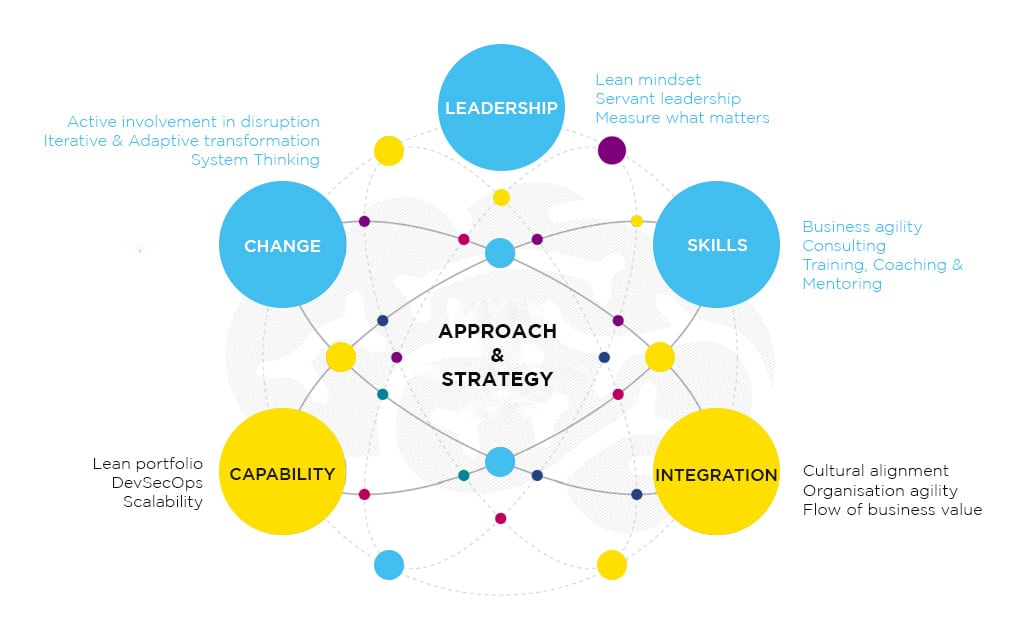
Leading with Agility: Modern Leadership Approaches

Leading with Agility: Modern Leadership Approaches
In the dynamic landscape of contemporary business, adopting agile leadership approaches has become essential for success. This article explores the key principles and strategies associated with agile leadership, examining how it empowers leaders to navigate change, foster innovation, and drive organizational growth.
Understanding Agile Leadership
Agile leadership is a mindset and a set of practices that emphasize adaptability, collaboration, and responsiveness. Unlike traditional leadership models, agile leadership thrives in environments where change is constant. Leaders who embrace agility are better equipped to steer their teams through uncertainty and capitalize on emerging opportunities.
Embracing a Collaborative Culture
One of the fundamental aspects of agile leadership is the promotion of a collaborative culture. Leaders foster an environment where team members actively communicate, share ideas, and work together towards common goals. This collaborative approach not only enhances teamwork but also stimulates innovation through diverse perspectives.
Empowering Teams with Autonomy
Agile leaders recognize the importance of empowering teams with autonomy. Instead of micromanaging, they provide clear goals and guidelines, trusting their teams to make informed decisions. This empowerment boosts team morale, creativity, and problem-solving capabilities, resulting in a more engaged and motivated workforce.
Iterative and Incremental Progress
Agile leadership embraces an iterative and incremental approach to progress. Rather than pursuing lengthy, rigid plans, leaders encourage teams to deliver value in small, manageable increments. This iterative process allows for continuous feedback, adaptation, and the ability to respond swiftly to changing market dynamics.
Focus on Customer Value
Customer value lies at the core of agile leadership. Leaders prioritize understanding customer needs and preferences, guiding their teams to deliver products or services that align with these requirements. By maintaining a customer-centric focus, agile leaders ensure that their organizations remain responsive to market demands and deliver meaningful value.
Adaptability in Leadership Styles
Agile leadership involves adaptability in leadership styles. Leaders understand that different situations may require different approaches. Whether it’s leading through inspiration, coaching, or facilitating, agile leaders flexibly adjust their styles to best suit the needs of their teams and the challenges at hand.
Continuous Learning and Improvement
An essential principle of agile leadership is a commitment to continuous learning and improvement. Leaders encourage a culture of learning, experimentation, and reflection. This continuous improvement mindset enables teams to evolve, learn from experiences, and enhance their processes over time.
Effective Communication Channels
Communication is a cornerstone of agile leadership. Leaders establish open and transparent communication channels, ensuring that information flows freely within the organization. Clear communication fosters collaboration, aligns teams with organizational goals, and reduces misunderstandings that can impede progress.
Building Resilient and Adaptive Teams
Agile leaders focus on building resilient and adaptive teams. They understand that change is inevitable, and by cultivating a resilient team culture, they equip their organizations to navigate challenges effectively. This resilience, coupled with an adaptive mindset, positions teams to thrive in dynamic environments.
Agile Leadership in the Digital Age
In the digital age, agile leadership is particularly crucial. The rapid pace of technological advancements requires leaders to be nimble and responsive. Agile leadership principles are well-suited to guide organizations through digital transformations, ensuring they leverage technology effectively for strategic advantage.
Culmination: The Future of Leadership
In conclusion, agile leadership approaches are not just a trend; they represent a fundamental shift in how leaders guide their organizations. By embracing collaboration, adaptability, customer focus, and continuous improvement, agile leaders position their teams to thrive in an ever-evolving business landscape. As we navigate the future, the principles of agile leadership will continue to shape the way organizations lead, innovate, and succeed.
For more insights on Agile Leadership Approaches, visit cheapcarinsurancehints.com. Explore how adopting agile leadership principles can empower your organization for sustained success.



